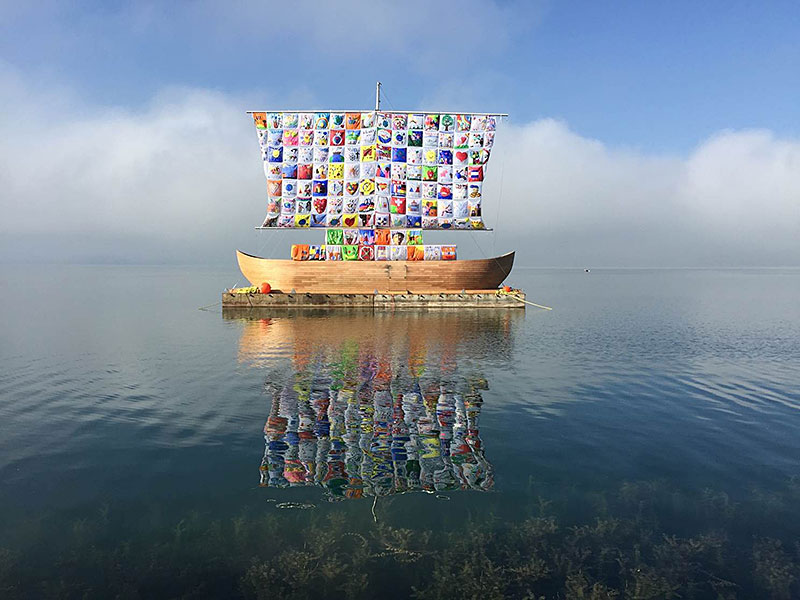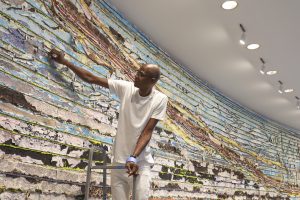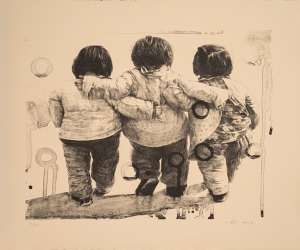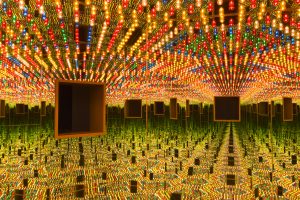“The Utopian Projects,” an exhibition which will be on display at the Hirshhorn Museum from Sept. 7 to March 4, is a culmination of works by two of the most significant Russian artists of the late twentieth century. Ilya and Emilia Kabakov have spent the past several decades designing massive public art projects all over the world, many of which have been partially or fully actualized. “The Utopian Projects” offers diverse models and maquettes, making use of kinetics, text, voice-overs, lights, and music to contribute to the exhibition’s whimsy and eccentricity.
The exhibition reflects the hardships the Kabakovs endured while living in the Soviet Union. Some of the works have more explicit references to the confinements of Soviet life. The man who flew into space from his apartment is a plywood model that presents a man attempting to slingshot himself into space, breaching a wide hole in the ceiling of his contained Russian communal. Viewers must crane their necks just to get a glimpse of the boarded apartment, which, while beige and dull from the outside, is exploding with color, posters, contraptions, and imagination on the inside. The man who flew into space from his apartment is rooted in both the space race and the claustrophobia generated by typical Russian communal apartments.
Another replica of a fully realized project, the fallen sky, shows a piece of “sky” made from wood, that has landed in a park without explanation. Accompanying the work is a story explaining the sky’s presence: a Russian pilot had filled his home with various aeronautical instruments and painted the walls and ceilings with different skies. A hurricane then ripped off his roof and carried it until it landed in the park of the United Nations in Geneva. The piece is placed in view of the Monument to the Conquerors of Space, a gift from the USSR. The text and location of the installation allude to the 1991 collapse of the USSR.
Most of the works, however, do not directly invoke the Soviet Union. Rather, they incorporate mythology, literature, and history to create an overarching utopia, seen through the Kabakovs’ shared view of the human experience as influenced by life in the Soviet Union. The models are dream-like. They make the impossible seem possible, all the while enticing the viewer to want to enter into each exhibit as its subject.
For example, How to meet an angel encompasses a skinny ladder that is, in theory, 3,300 feet tall, requiring a two-day climb to reach its summit. At the top, the climber is above the clouds. Upon asking for assistance, an angel would come to his rescue. According to the Kabakovs, it is only when we are alone and vulnerable to danger or even death that we can encounter our miraculous savior.
One of the most impressive works of “The Utopian Projects” is toilet on the mountain. Ilya explains that the work replicates the revolting 1960s Russian outhouses. These toilets, however, are made without doors, and set on top of a mountain so that whoever is using the toilet can view the immense landscape before them. Toilet on the mountain actually re-imagines russian outhouses as a method of escape from the hardships of life in the Soviet Union, into a spiritualistic and naturalistic environment that promotes inner concentration.
Ultimately, “The Utopian Projects” effectively allows the viewer an escape into the utopia of its imagined works, despite the brutal reality of the Kabakovs’ shared experiences that inspired their artistic expression. Upon completing a revolution of the exhibition space and leaving the exhibit, one feels bereft of those powerful fantasies that the works allowed him or her to escape into. The Utopian Projects offer an escape far more visceral than any other ordinary art exhibit.





